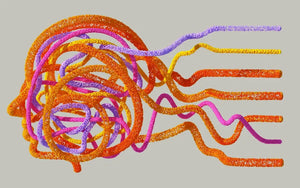Google Display campaigns offer an excellent opportunity to reach users across millions of websites, apps, and Google-owned properties. The secret to getting strong results is thoughtful setup, continuous optimization, and smart measurement.
Here’s how you can maximize performance from the very beginning.
1. Track Conversions Accurately
Start by setting up conversion tracking to measure how well your ads drive valuable actions, such as purchases, sign-ups, or downloads on your website or app. This is critical to understanding return on investment (ROI).
-
Regularly review your conversion setup to make sure it’s capturing all key actions.
-
Test your setup by triggering a conversion and confirming that it appears in Google Ads, Google Analytics (GA4), or any third-party platform you’re using.
2. Align Your Campaign with a Clear Goal
When creating your Display campaign, choose a campaign goal that reflects your specific business objective, whether it's sales, leads, website traffic, or brand awareness. This helps Google Ads serve your ads to the most relevant users.
Combine this with Smart Bidding strategies, which automatically set the right bid for every auction using real-time data signals. This automation can dramatically improve efficiency and conversion outcomes.
3. Use Optimized Targeting for Greater Reach
Optimized targeting expands beyond your manually defined audience segments to identify new, high-value users who are more likely to convert.
This privacy-safe feature analyzes intent and behavior signals to help you reach the right people at the right time, even if you didn’t include them in your initial audience list.
You can still add optional signals like audience segments, demographics, or keywords to help guide the system’s learning.
4. Build Effective Ads with Quality Assets
Your ad performance is only as good as your creative. Upload a variety of images, logos, headlines, descriptions, and videos to generate high-performing responsive display ads. Google will automatically test and serve the best combinations based on user behavior and context.
Advertisers who add responsive display ads to ad groups alongside static ads typically see 2x more conversions on average.
To go further, take advantage of:
-
Auto-generated video assets
-
Native ad formats
-
Asset enhancements
-
Product feeds with real-time images, titles, and prices
Frequent testing with new creative ensures your campaigns stay relevant and engaging.
5. Measure the Full Impact of Display
Display campaigns often influence users in subtle ways that don’t result in an immediate click. That’s why it’s important to include:
-
Engaged-view conversions (EVCs): Users who watch a video ad for 10+ seconds and then convert later.
-
View-through conversions (VTCs): Users who see your ad but don’t click, and later take action on your site.
These additional conversion types help you understand the full funnel effect of your Display campaigns. You can view them in your “Conversions” column.
Review and adjust the look back window settings to align with your typical sales cycle.
Finally, enable GA4 auto-tagging to capture rich Google Ads data in your analytics platform, giving you a complete view of performance across all touchpoints.
Conclusion:
Successful Google Display campaigns require more than just launching ads; they demand strategic planning, automation, creative variety, and detailed performance tracking. By setting up proper conversion tracking, using optimized targeting, building strong responsive ads, and evaluating engaged-view conversions, you can maximize the impact of every impression and reach high-value users more effectively. With the right tools and approach, Display campaigns can become a powerful part of your marketing mix.






